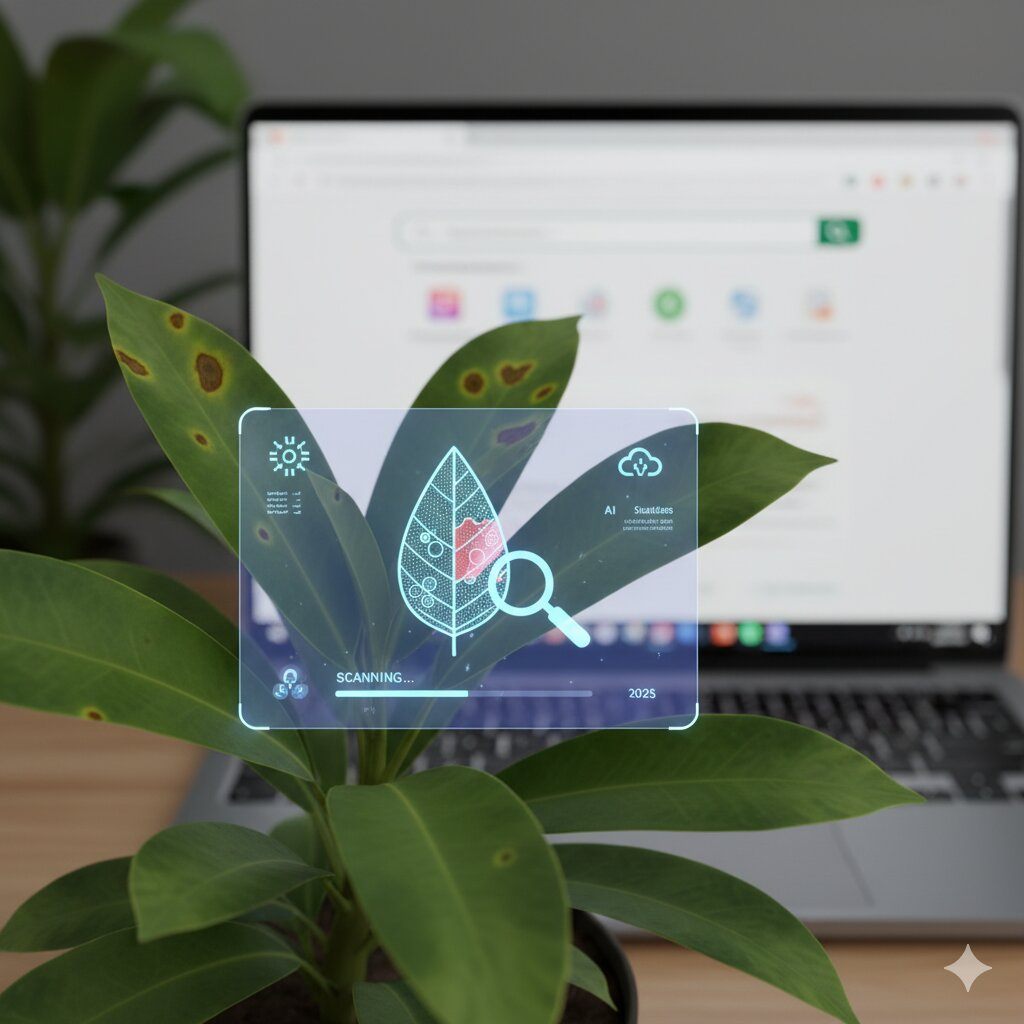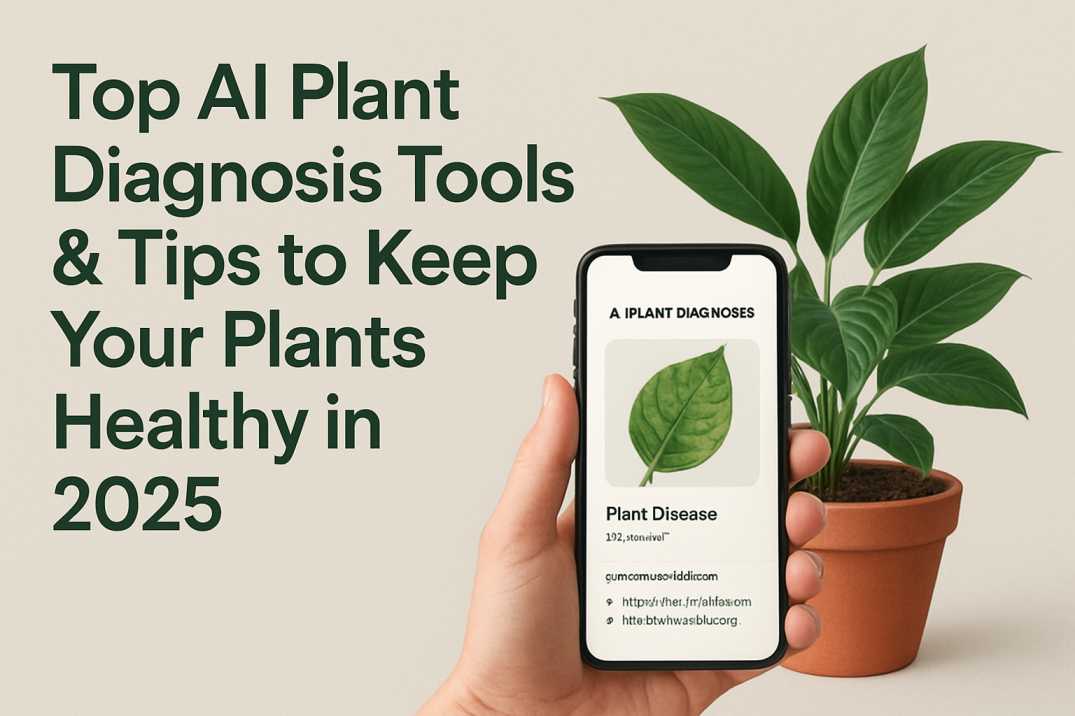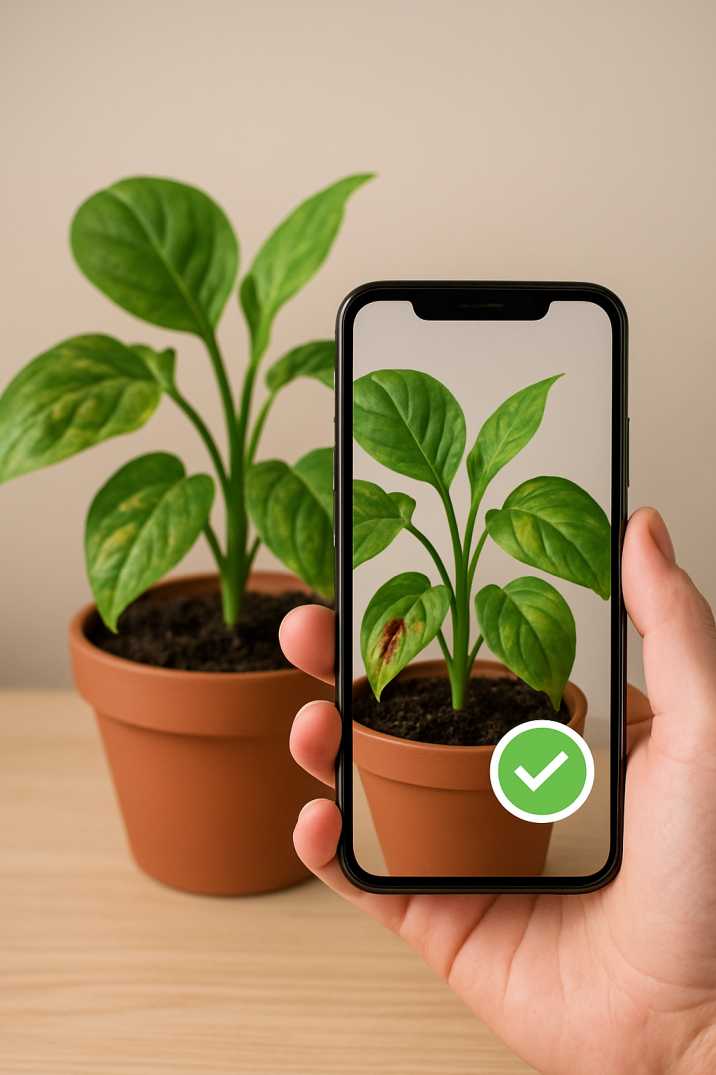Smart Plant Disease Diagnosis: Free Online Tools & AI Solutions for 2025
Discover how free online tools and AI-powered solutions are transforming plant disease diagnosis in 2025 — spot issues early, act fast and keep your plants healthy.

Introduction: Why Faster Plant Disease Diagnosis Matters
In today’s gardening and indoor-plant world, early detection of issues is key. When a leaf develops a spot, a wilted edge or a strange colour, the difference between recovery and loss can be narrow. That’s where plant disease diagnosis tools step in — combining science, AI and accessibility to help you act faster.

Image credit: Plant Solutions
1. The Rising Demand for Smart Diagnosis Tools
Research shows that conventional methods of detecting plant pathogens — lab tests, expert visual inspection — are being supplemented by advanced imaging, sensors and AI-based analytics. :contentReference[oaicite:0]{index=0} For gardeners and indoor-plant enthusiasts, this means better access to diagnosis without needing specialist labs.

Image credit: Plant Solutions
2. How Free Online Tools and Mobile Apps Work
Many free web-based platforms and mobile apps let you upload a photo of your plant’s leaf, stem or overall condition, and then use algorithms to assess possible issues — whether it’s a fungal infection, pest damage or nutrient deficiency. For example, the app Plantix diagnoses plant damage and recommends treatment. :contentReference[oaicite:2]{index=2} These tools often rely on large datasets, image recognition models and simple user interfaces.

Image credit: Plant Solutions
3. Key Features to Look for in a Good Diagnosis Tool
When choosing a tool, be sure it offers these features: clear symptom explanation, treatment suggestions, image upload capability, and species recognition. A robust tool helps you understand not just what’s wrong, but also what to do next.

Image credit: Plant Solutions
4. Common Plant Issues Diagnosed by AI and Tools
Tools can help detect leaf spot fungi, root rot, mite infestation, nutrient deficiencies and more. By comparing your plant’s photo with known patterns, the system suggests a likely issue and next steps.

Image credit: Plant Solutions
5. Step-by-Step: Using an Online Diagnosis Tool
Here’s how you can use a tool effectively:
1. Take a clear photograph of the affected plant part, in good lighting.
2. Upload the image and answer any short questions the tool asks (plant species, recent changes).
3. Review the suggested diagnosis and recommended actions.
4. Follow the treatment plan — isolation, pruning, soil change, or pest spray as suggested.

Image credit: Plant Solutions
6. Benefits and Limitations of Free Diagnosis Tools
The benefits are clear: accessibility, ease of use and fast feedback. However, limitations include model accuracy, species coverage and image quality dependency. Research notes that tools still struggle with less-common plants and under-lit images. :contentReference[oaicite:3]{index=3} Knowing these limits helps you use these tools effectively — as a first step, not a final verdict.

Image credit: Plant Solutions
7. How to Interpret the Results and Act Wisely
Once you receive a diagnosis like “fungal leaf spot” or “mite damage”, don’t panic. Use the result as guidance: confirm the symptoms, follow recommended changes (soil, watering, isolation) and monitor progress. Combining smart tool output with your own plant-care routine creates the best outcome.

Image credit: Plant Solutions
8. Preventive Care: Use Diagnosis Tools Proactively
Why wait for a crisis? Use tools periodically to check your plants, especially if you switch soil, move them outdoors or notice subtle changes. Early alerts from diagnosis tools let you prevent major damage and maintain plant health consistently.

Image credit: Plant Solutions
Conclusion
The fusion of free online tools and AI-powered diagnosis is changing the way we care for plants. By combining smart diagnosis, early detection and informed action, you can keep your plants healthier and avoid many common issues. Treat the tool as your digital plant assistant, and your consistent care as the real change-maker.




